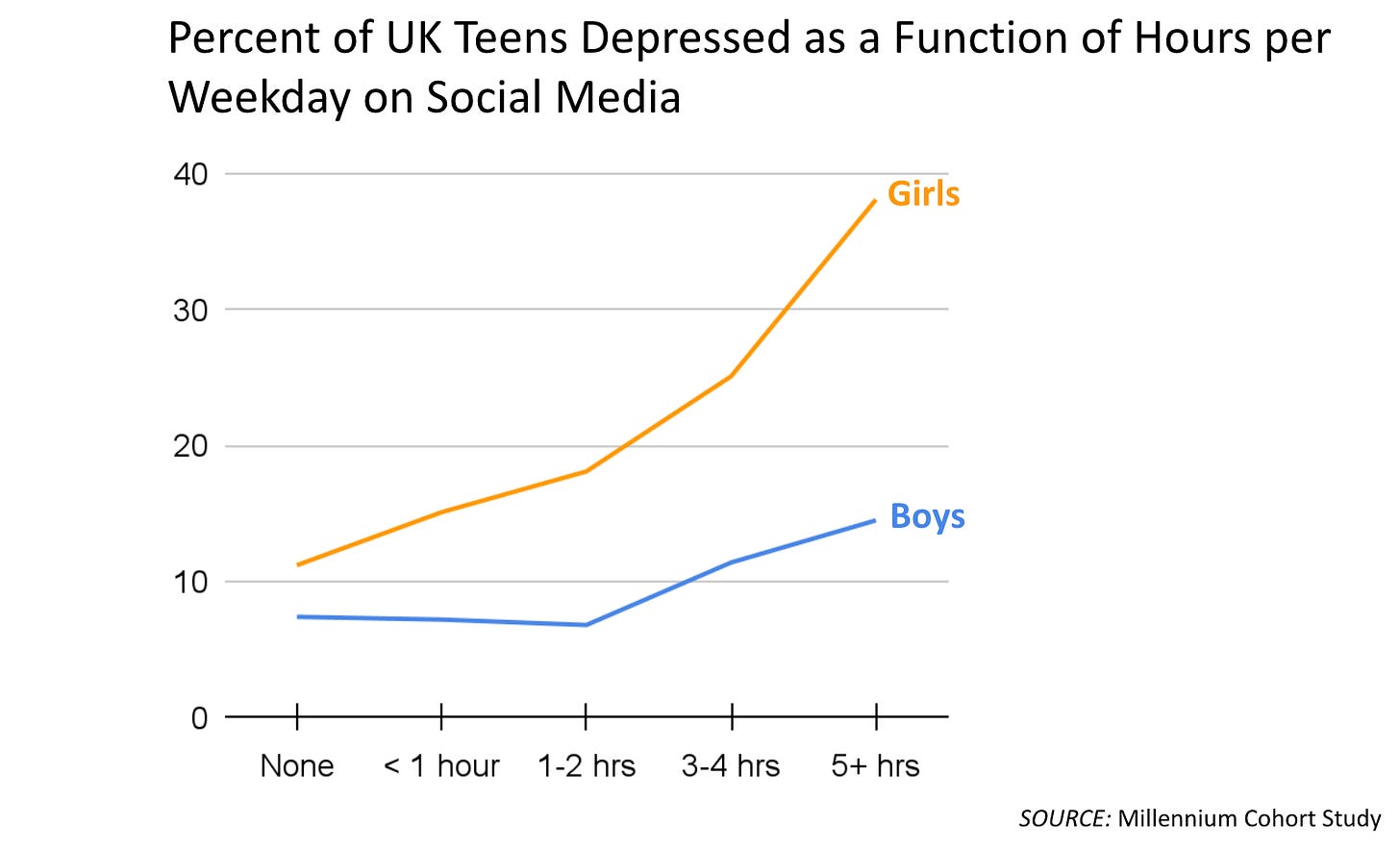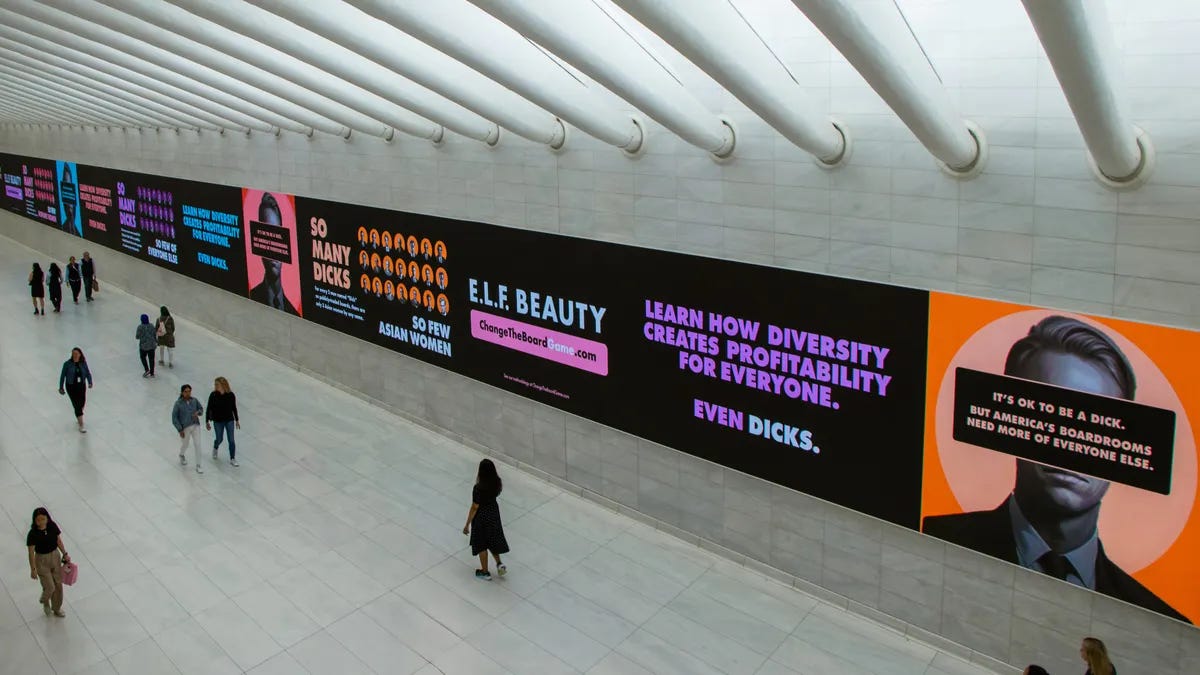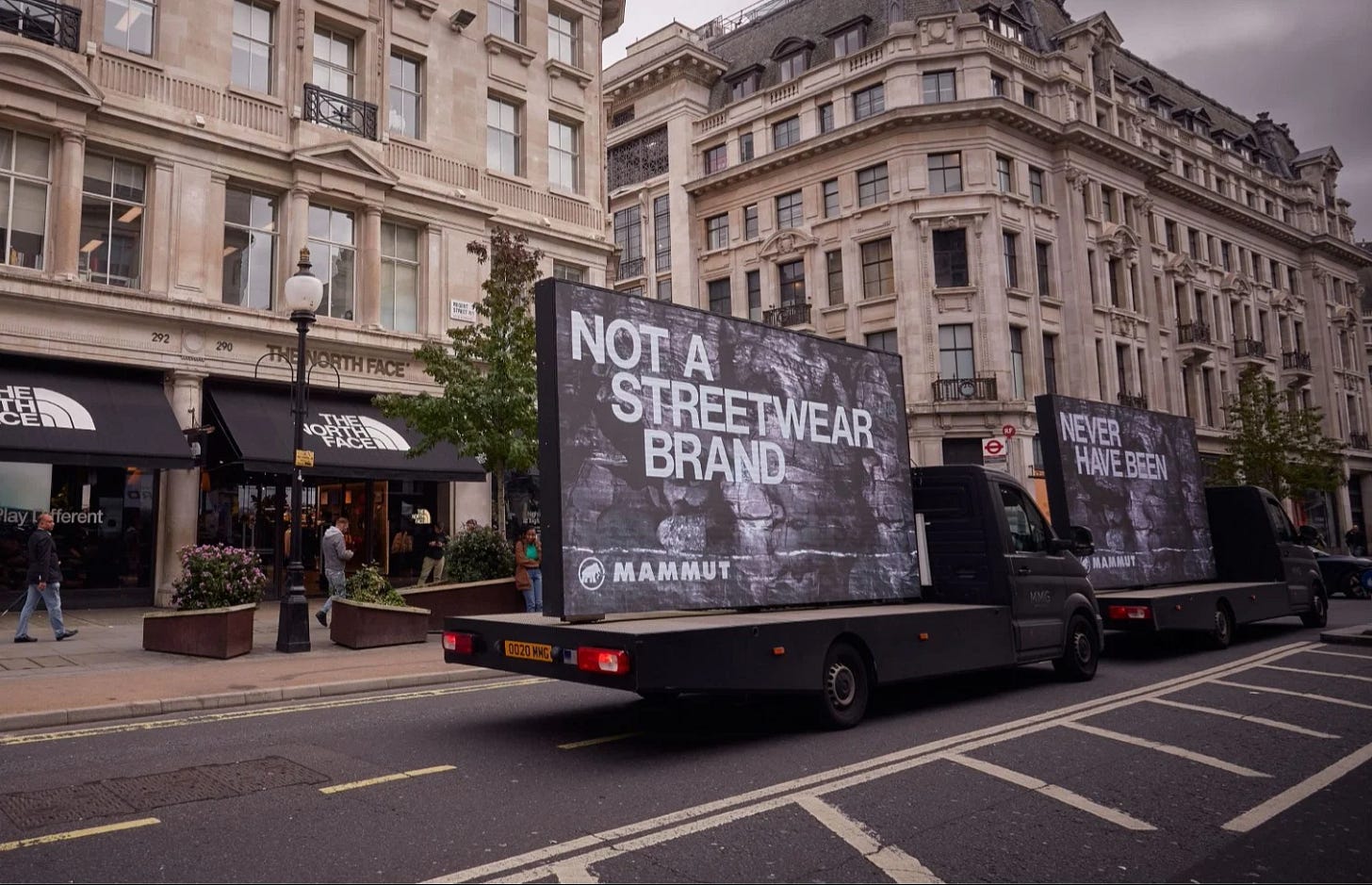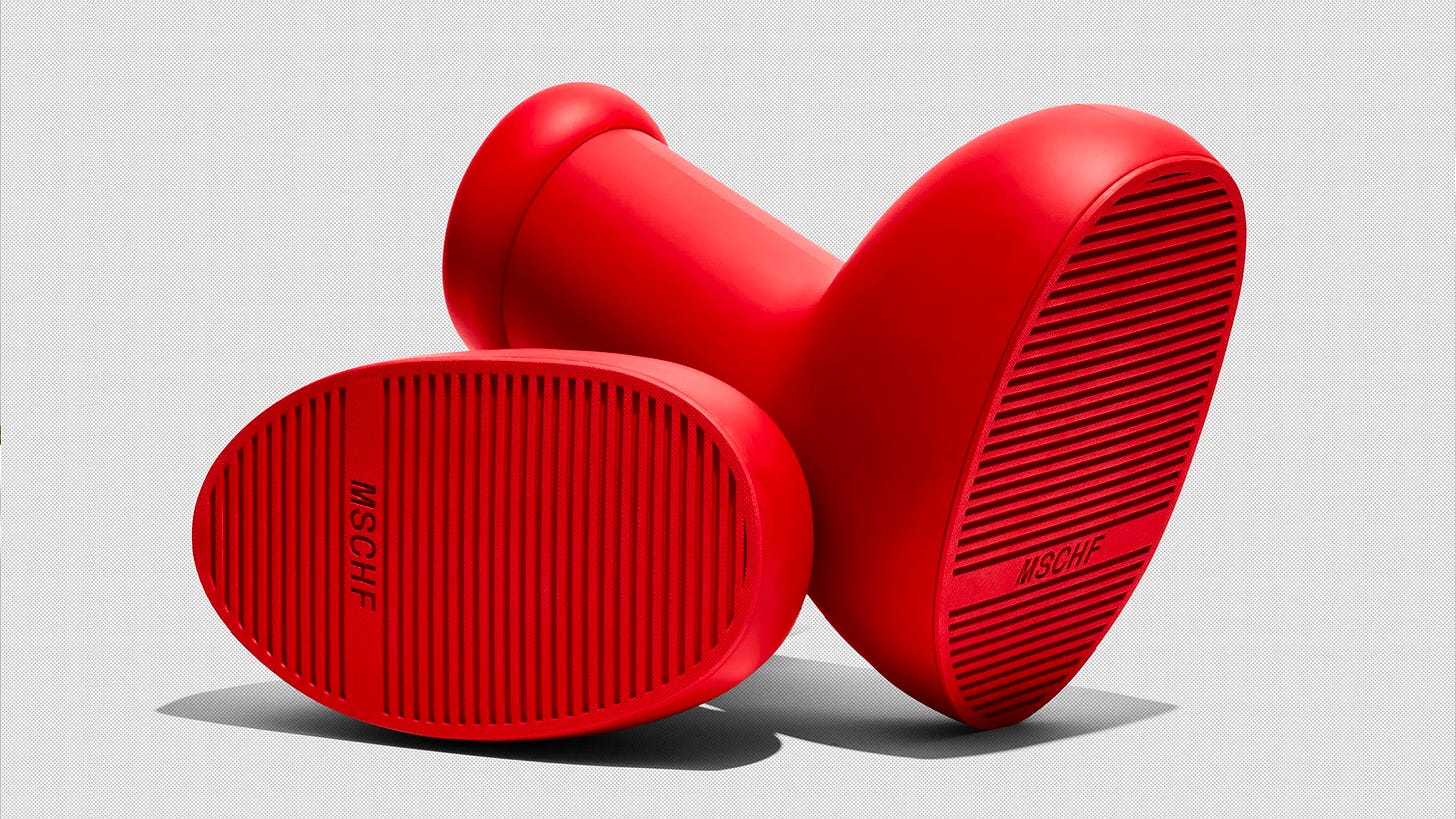“You can't go back and change the beginning, but you can start where you are and change the ending.” - C.S. Lewis
This week:
Fewer. Better? It’s Memorial Day Weekend, so we’re focusing on just a couple of things this week
1. If Truth worked so well to curb cigarette smoking, why isn’t anyone pulling out the same playbook?
2. Purpose debate (once again) on the CMO podcast
3. Purpose in action - why Mammut is hanging its CEO off the side of a cliff and hiding Leicas all over the world
4. Hacking the Attention Economy - new report suggests 75% of ad is wasted bc it’s being served to no one paying attention
In 2000, 23% of U.S. teens smoked cigarettes.
By 2021, that rate was down to 2.3%.
Truth Initiative’s Truth Campaign impact on teen smoking has been well documented, both in getting young adults to quit and preventing others from starting in the first place.
So, if Truth was so effective for smoking?
Where is the “Truth” campaign for the issues of today?
Why has there been no large Truth campaign for fossil fuels? For social media addiction? Online gambling? Processed foods? Sugar? Or any of the other addictive habits plaguing society today?
To think about how this could work, let’s start with this:
What is ‘Truth’?
I’m not going to retell the entire history of the Truth Initiative. But the nationwide campaign, simply branded Truth, launched 25 years ago.
Truth ‘Body Bags’ (2000) - Crispin Porter + Bogusky / Arnold
It followed decades of scare-tactic ads or “just say no” style, which preached never to start to begin with.
Truth succeeded where these did not, in part, because it:
Made Big Tobacco the enemy
Whereas previous campaigns focused on the individual’s willpower, Truth focused on the part the tobacco industry plays.
Exposed Big Tobacco tactics
Pulling back the curtain on its lobbying and marketing efforts to both obscure (even outright lie about) the harmful effects while promoting smoking as a cool lifestyle.
Made it feel like a Movement
Focusing on collective action, positively reinforcing each other as the generation that can finish smoking for good.
As a result, ‘Truth’ is one of the most successful mass behavior change campaigns ever.
So why isn’t anyone dusting off the playbook for the issues of today?
For example:
The Truth for Teens and Social Media
Could knowing the “TRUTH” about social media company practices make teens better stewards of their own online behavior?
We already know there is a direct correlation between the decline in teen mental health and the availability of social media. More time spent = more depression.
Todays’ teens would seem to be suspicious already. It may not even be that hard, with a growing number saying social media is harmful for others their age.
However, those same teens aren’t as likely to recognize their own vulnerability.
Would they be more wary if they knew the social media companies’ powerful data behind their behavior? And the willful ignorance on their part to curbing the most addictive aspects of the service?
TikTok executives know about app’s effect on teens, lawsuit documents allege (NPR)
‘They’re addicting kids and they know it’: the attorney challenging social media firms (The Guardian)
Or even worse, the indifference to safeguarding teens from harmful content and adult strangers, even when purportedly designing safeguards voluntarily:
When I showed the group’s report to Instagram’s owner, Meta, it said that the youth testers were biased and that some of what they flagged was “unobjectionable” or consistent with “humor from a PG-13 film.”Gen Z users and a dad tested Instagram Teen Accounts. Their feeds were shocking. (Washington Post)
ScaryFeeds: The Reality of Teen Accounts Report (Accountable Tech)
The bigger issue may be reaching teens, considering their near-constant use of these apps/sites compared to other media.
Would Meta etal allow for a Meta-TRUTH campaign to break through the algorithm?
“The fossil fuel industry is running perhaps the biggest campaign of disinformation and political interference in American history and they’re backing it up with immense amounts of political spending. The consequences in the White House are enormous and having a huge effect … but people aren’t aware.”The Truth about Fossil Fuel Companies
Are we truly dependent on gas/coal/oil, or is this the lie they pay to tell us?
The petroleum industry, in particular, is egregious in this. Going beyond lobbying to spend behind oil-friendly candidates like Trump ($96m in ‘24), while also funding misinformation campaigns meant to bring climate science into question.
Throwing the problem back onto the public, through misleading campaigns suggesting recycling as a solution* which only further embeds plastic into packaging, textiles, and every other consumable good possible.
*Most plastics are made from petroleum and natural gas, with a small fraction derived from renewable sources)
.
Even popularizing the idea of an individual ‘carbon footprint’ passing the guilt onto the consumer’personal responsibility rather than the industry’s contribution writ large.
‘A Trojan horse of legitimacy’: Shell launches a ‘climate tech’ startup advertising jobs in oil and gas (The Guardian)
How Big Oil Misled The Public Into Believing Plastic Would Be Recycled (NPR)
How Big Oil helped push the idea of a 'carbon footprint' (WBUR)
Oil Executives Grilled Over Industry’s Role in Climate Disinformation (NY Times)
All while putting on a good public face, expressing concern for the environment, while making a commitment towards reducing emissions (even receiving tax credits for capturing its own emissions).
Today, energy has become part of political identity. Carbon-based fuel is somehow as red-blooded American as apple pie, baseball and red meat for many Republican voters.
This allows Big Oil / energy companies to continue driving substantical profits while also continuing to receive government subsidies under the guise of providing abundant energy while reducing overall costs. Skewing the market against renewable while protecting their position.
Would a ‘Truth’-style campaign break the public perception of energy and make politicians rethink the political will for continuing to subsidize these companies? Could it help flip die-hard petrol-heads to rethink their position and be less loyal to fossil fuel sources, maybe even adopting electrification as a form of libertarian / anti-establishment protest?
Both the social media and the fossil fuel companies
have been demonstrably devious in their tactics in both growing their hold on the public while holding back any sort of meaningful government oversight. Much like Big Tobacco did before.
That both of these are so ingrained into every part of our lives makes it particularly difficult. Whereas the ‘Truth’ about Big Tobacco helped many break up with a product they could ultimately do without, fossil fuels are virtually impossible right now to avoid, and social media certainly feels the same.
Still, wider spread awareness of their tactics could shift perception enough to force more government oversight and fair practices from each.
The other difference. Big Tobacco paid for the Truth campaign, as part of a massive lawsuit settlement. Who’s going to pay for that against social / fossil fuel today?
Related:
What we've been training our kids to do since the 90s, since we got them hyper supervised all the time, is we're training them to report each other to the adult. So if there's a conflict, he hit me.
And that's training for authoritarianism. There's always an authority who will enforce things.” -Jonathan Haidt, The Anxious Generation on From What Now? with Trevor NoahTallies of AI’s energy use often short-circuit the conversation—either by scolding individual behavior, or by triggering comparisons to bigger climate offenders. Both reactions dodge the point: AI is unavoidable, and even if a single query is low-impact, governments and companies are now shaping a much larger energy future around AI’s needs.We did the math on AI’s energy footprint. Here’s the story you haven’t heard. (MIT Technology Review)
By 2028 more than half of the electricity going to data centers will be used for AI.At that point, AI alone could consume as much electricity annually as 22% of all US households.
“A purple cow is only one thing. Remarkable. Remarkable means worth remarking about… So how much time are you spending making something worth talking as opposed to making spec?” - Seth Godin
Another day, another debate on the merits of
Brand Purpose
courtesy of The CMO Podcast with Jim Stengel.
The latest episode brings on
Kory Marchisotto, Chief Marketing Officer of e.l.f. Beauty,
Lisa Materazzo, Global Chief Marketing Officer at Ford Motor
Sara Carter, Global Planning Partner at adam&eveDDB
and Mark Ritson, Marketing Week columnist and noted Brand Purpose skeptic
Mark has notably stated
The purpose of purpose is purpose, not money
and that purpose, by definition, is going to cost you money at some point.
Calling into question the idea that a brand purpose is a driver of profit, revenue, and brand value.
Both Kory and Lisa call this bit into question, as both e.l.f. and Ford (as well as others) have demonstrated that purpose is a driver of brand loyalty and thus long-term growth.
If there’s any agreement on the panel, it’s that the sins of recent purpose marketing are that it’s been ‘bolted on’, reverse-engineered, and used as performatively. Deployed first when the marketing fundamentals, such as price, product, distribution, and brand codes.
And it must be product-tethered. Connected back to what the business is in the business of doing.
A principle isn’t a principle unless it costs you something
My take,
Purpose isn’t a cost, it’s an investment
Mark’s core argument is:
Purpose is an ethical stance, not a growth driver
Consumers mainly don’t care (employees might)
Real purpose carries a price tag—Ben & Jerry’s & Patagonia prove it.
And to that point, I would like to argue that both Ben & Jerry’s and Patagonia prove the opposite.
Ben & Jerry’s is a fine ice cream. But it’s not exceptionally fine. It’s a bit premium. It is widely available, but it also comes in pints, whereas many others were sold by the quart.
Patagonia, similarly, makes fine gear. It’s functionally good but not category-leading. It’s aesthetically good but not all that unique or design forward from its competition.
What sets both of these apart and builds their value is, in large par,t their purpose-driven marketing. Building notoriety (and thus salience) for each, and brand loyalty. Thu,s many will pass over a competitor which may be cheaper or even a bit better, in favor of either of these that align with their values.
So to say that both have left money on the table is to suggest that either would be where it is today without adhering to these brand values.
Now, where brand purpose and salience are not cohesive is with mature, legacy brands. Which is where much of the criticism lies.
Hellmanns, Pepsi, Gillette etc, have incredible brand salience. Recognizable assets, positions, memory structures - brand power. So to all of a sudden suggest there is a deeper purpose to which has been unknown, is a difficult pill to swallow for many. Leading to performative acts which feel performative because no one buys the heart behind it.
Here, Mark may be right. The consumer doesn’t know, nor care.
You can listen to the whole debate here:
Purpose at Work: E.L.F. and Ford
Two examples from the panelists:
E.l.f. says corporate America has ‘So Many Dicks’ and not enough diversity (Marketing Drive)
e.l.f.’s ‘Change the Board’ initiative is its push to expand the diversity of America’s corporate boardrooms, which are largely male (63%) and white (88%). What’s the connection back to beauty?
For e.l.f., they see a broader role that this plays in their customer’s lives. An amplifier of individual expression, empowerment and human rights. Expanding Board room representation has a positive impact on the companies bottom line, opening up more opportunities for others.
Ford Gives Breast Cancer Patients a Comfortable Ride (Nam.org)
1 in 8 women will be diagnosed with breast cancer in their lifetime.
100,000 women each year undergo mastectomies.
And many more undergoing chemo and other treatments for breast cancer, which can leave the chest area highly sensitive.
Making the simple but mandatory act of wearing a seatbelt while in a car, quite uncomfortable.
The idea came from within Ford’s ad agency VML, and together in partnership with Ford’s engineering and design they were able to offer a SupporBelt. A soft foam pad, hollow on the inside, rests against the chest underneath the seatbelt, which is secured to it by Velcro straps.
In addition, Ford has made the design ‘open source’ so that other auto manufacturers can provide adapted versions for their vehicles.
One More…
Why is outdoor company Mammut’s CEO, strapped to the side of a cliff?
He’s here to announce to take the summer photo contest up a notch. Together with Leica, Mammut is hiding 24 cameras and $60K worth of outdoor gear where only the most adventurous will find it (likely on a cliffside like this one with its CEO).
The scavenger hunt extends from its brand mission (inspire people to experience the mountains for themselves) and 160+ year history as a mountain gear and apparel company (originally made climbing ropes).
In an industry that has become fashion, embracing form over function, Mammut has remained true to its core. Even demonstratively proclaiming
So maybe, to Mark Ritson’s point, Mammut is costing itself something. But I think they would argue it’ll pay off in the long run.
Here’s the scavenger hunt announcement by Mammut CEO Heiko Schäfer with outdoor photographer Chris Burkhard.
Related:
Culture-leading brands don’t mirror the monoculture. They interrogate it—and invite others to do the same.Subversion as creative strategy (Sociology of Business) offers up a strategic framework for how brands can disrupt monoculture by amplifying their brand truth—turning that disruption into a magnet for true fans.
By creating friction between what they believe and what the world accepts, brands can spark moments that shift culture and accelerate their relevance.
ATTENTION ISN’T JUST A METRIC - IT’S THE FUEL FOR BRAND GROWTH. FOR THE FIRST TIME, WE’RE NOT JUST MEASURING ATTENTION - WE’RE SHOWING HOW TO BUILD WITH IT - OR LACK OF IT. MEDIA AND CREATIVE, FINALLY WORKING TOGETHER. THIS IS THE NEXT FRONTIER IN THE BATTLE TO BE SEEN.
Is anyone paying attention?
Hacking the Attention Economy
is a new report from media agency VCCP and media scientist Dr Karen Nelson-Field which asks a fundamental question about advertising today…
Is anyone paying attention?
Why the question?
Brands are pouring ever larger budgets into digital channels ($333B, a 400%+ since ‘08) without equivalent returns (the top 50 advertisers have seen average growth rates of just 3%).
The reason, most ads aren’t truly seen.
Only about 25% of technically ‘viewable’ impressions get any sort of human attention
75% of technically viewable ads are served to people who aren’t paying attention
85% of digital ads attract under 2.5 seconds of gaze time, below the level where research shows people reliably remember what they saw
To create the report, VCCP and Dr Nelson-Field created a “Bad Twin test”, taking recognized brands such as O2, Cadbury, and Domino’s and creating two otherwise-identical versions of each digital ad:
Good twin: all distinctive brand assets (colour palette, typeface, mascots, sonic logos, product shots) intact.
Bad twin: those assets systematically stripped out (logo stayed, storyline unchanged).
Key Findings:
Media platform sets the ceiling - not creative
Seconds of attention vary FAR MORE by format than by creative quality. Platform choice can swing active-attention time ± 66 %; creative changes only ± 25 %.
Distinctive assets are an “attention amplifier”
When branding cues are present, every second works harder: STAS uplift per £1 is almost 3× higher (9.0 vs 3.1) and MA efficiency 1.4× higher than asset-stripped ads.
New attention–memory threshold
With strong assets, you can spark brand memory in ~1.5 s instead of the old 2.5 s rule-of-thumb — crucial because 85 % of impressions fall below 2.5 s.
NOTE: I do wonder how this would perform for a low-to-no awareness brand vs a mature-brand
The “Distinctive-Asset Tariff
”Running weakly branded creative wastes money. Established brands “lose” £0.69 of every £1 in digital spend; growth brands lose £0.59. Web banners are worst (£0.70 lost per £ 1).
Scroll-proof, not thumb-stopping
People actually scroll faster when assets are present, but recognition happens instantly, so outcomes improve anyway. Distinctiveness cuts through motion rather than slowing it.
NOTE: once again, perhaps good for reinforcing brand, but what about introducing a new product/concept?
Five-point prescription to “Hack the Attention Economy”
Know your assets – Audit & codify fixed (logo, colours, sonic) and flexible (photography, tone) elements.
Balance meaning vs. reach – Use high-attention channels to imbue assets with meaning and low-attention channels to deploy them at scale.
Plan by format-fit – Match asset strength to formats whose natural attention “corridor” can accommodate them.
Count seconds, not impressions – Trade on attentive reach (seconds × people) and demand seen-not-served metrics.
Boardroom-proof the value – Calculate the Distinctive-Asset Tariff for your own media mix to show the real £ impact of branding discipline.
Take-aways for practitioners
Creatives & media planners must work as one: Asset design and placement strategy are inseparable.
Design for the feed, not against it: You can’t break the platform’s attention limits, but you can fill every allowable second with unmistakable brand cues.
Measure what matters: Start using attention-based KPIs (active seconds, MA, STAS) rather than view-through or clicks.
Run an “asset stress test”: Before launch, create a bad-twin version of your own ads to quantify how much value your assets really add — then decide if you need to strengthen them.
Bottom line:
Every second counts - quite literally, the first 1.5 seconds may be enough.
Distinctive brand assets don’t just help get attention; they turn even fleeting glances into measurable memory and sales.
Having control of your brand assets can drive 2-6x higher brand and sales results.
Therefore, creative AND media need to work in tandem.
Read the report here.
The more I see, the less I know for sure. - John Lennon


















